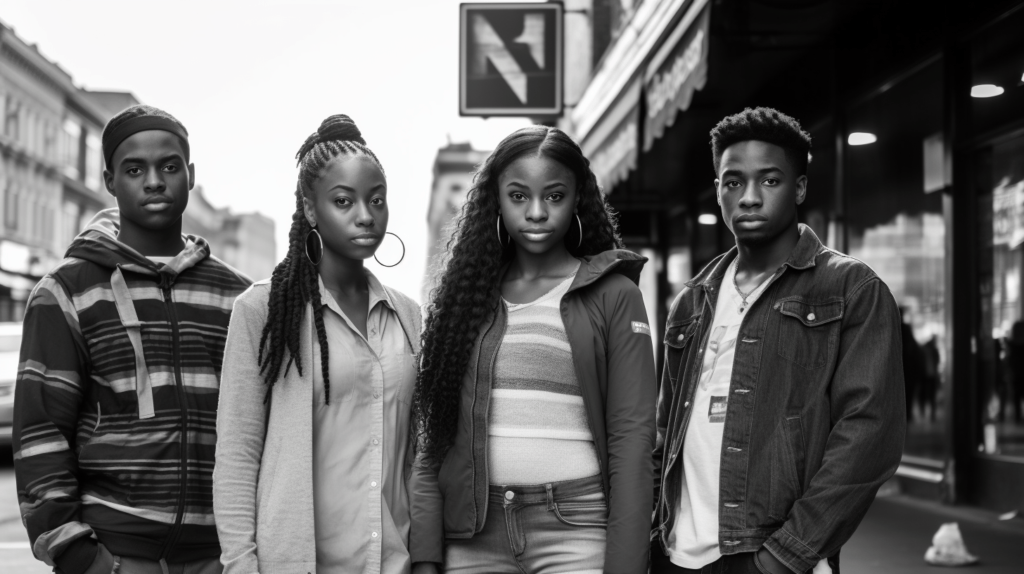The Progress and Challenges of Black Americans: A Comprehensive Analysis of Socioeconomic Disparities and the Power of Community

The journey of Black Americans toward progress and equity is a complex narrative, filled with both significant strides and formidable challenges. This narrative is particularly evident in the transformation of Washington, D.C., a city that has witnessed a drastic shift in its demographic landscape due to economic development and gentrification. As reported by The New York Times, the city’s Black population has been shrinking, with the last predominantly Black neighborhoods now located east of the Anacostia River.
The Impact of Gentrification on Black Communities
Gentrification, often hailed as a sign of economic progress, has had a profound impact on Black communities in Washington, D.C. The city’s landscape, once dotted with cranes signifying construction and development, is now adorned with high-rises. These towering structures, symbols of economic advancement, have replaced the once-familiar skyline. Riverside walkways, once neglected, now lead to new restaurants offering picturesque water views. The Anacostia River, once littered with trash, now flows clean, devoid of plastic bags.
However, this transformation has come at a cost. The rise of luxury buildings and the increase in property taxes have made it increasingly difficult for the Black community to maintain its foothold in the city. The economic development, while bringing prosperity to some, has inadvertently led to the displacement of many Black residents. The city, once known as the “Chocolate City” due to its significant Black population, has seen a steady decrease in its Black demographic.
Socioeconomic Disparities: A Major Hurdle
Progress for Black Americans is not a straightforward path. It is often marred by socioeconomic disparities that manifest in various aspects of life. Despite making up only 13 percent of the U.S. population, Black people account for 40 percent of those experiencing homelessness. This stark disparity is not a random occurrence but a product of systemic decisions made over decades that have hindered progress toward equity for Black Americans.
These socioeconomic disparities extend beyond housing. They are evident in the healthcare sector, where Black Americans often face higher rates of health conditions such as heart disease and diabetes. They are visible in the education sector, where Black students often have lower graduation rates and lower access to quality education. They are present in the economic sector, where Black Americans often have lower incomes and higher unemployment rates. These disparities are not isolated incidents but are interconnected, each one exacerbating the other, creating a cycle of inequality that is difficult to break.
The Power of Community Economics
Despite these challenges, there are glimmers of hope and resilience within the Black community. One such example is the neighborhood of Greenwood in Tulsa, Oklahoma, once a thriving financial center for the African American community. Greenwood’s success was fueled by the concept of group economics, where Black Americans supported a local Black economy. This model of economic development serves as a beacon of what a mostly Black community can achieve in the United States.
Greenwood, often referred to as “Black Wall Street,” was a testament to the economic power of the Black community. It was a place where Black-owned businesses thrived, where Black homeownership was high, and where Black wealth was accumulated. Despite the tragic destruction of Greenwood during the Tulsa Race Massacre, its legacy lives on, serving as a reminder of the potential of Black communities when given the opportunity to thrive.
Lessons from History: The Legacy of W.E.B. Du Bois
The work of W.E.B. Du Bois, a pioneering figure in documenting Black progress in the U.S., offers valuable insights into the journey of Black Americans toward progress and equity. Du Bois presented a set of images at the Paris World’s Fair in 1900 that showcased the growth of a free Black nation in the face of resistance from white supremacy. His work serves as a reminder of the resilience and potential of the Black community, even in the face of adversity.
Du Bois’s work was groundbreaking in its time. He sought to challenge the prevailing stereotypes about Black Americans by presenting a different narrative, one that highlighted their achievements and contributions. His data visualizations and photographs painted a picture of a thriving Black community, one that was making significant strides in education, economics, and social mobility. His work serves as a testament to the power of representation and the importance of documenting and celebrating Black progress.
Building a Better Future: Learning from the Past
As we navigate the complexities of progress for Black Americans, it is essential to reflect on our history and learn from our ancestors. Are we building on their best ideas and learning from their worst mistakes? Are we preparing a better future for the next generation? These are the questions that we must grapple with as we strive to create a society that is equitable and inclusive.
The lessons from history are clear. The progress made by Black Americans has often been hard-won, achieved in the face of systemic barriers and resistance. Yet, despite these challenges, Black Americans have shown remarkable resilience and determination. They have made significant strides in various sectors, from education to health to economics, often paving the way for future generations.
However, the journey towards progress and equity is far from over. There are still significant disparities that need to be addressed, from the ongoing issue of gentrification to the persistent socioeconomic inequalities. As we move forward, it is crucial that we continue to learn from our past, build on our successes, and work towards creating a more equitable future.
The journey towards progress and equity for Black Americans is a long and winding road, filled with both triumphs and trials. However, by acknowledging the challenges, learning from our history, and harnessing the power of community, we can pave the way for a brighter and more equitable future. The story of Black Americans is one of resilience and determination, a testament to the power of community and the enduring spirit of progress.
